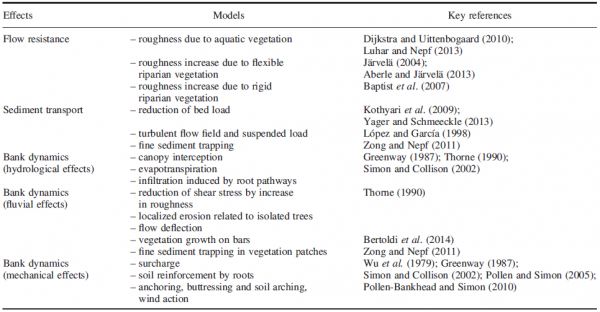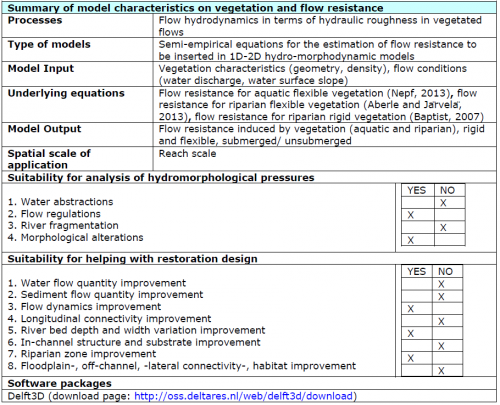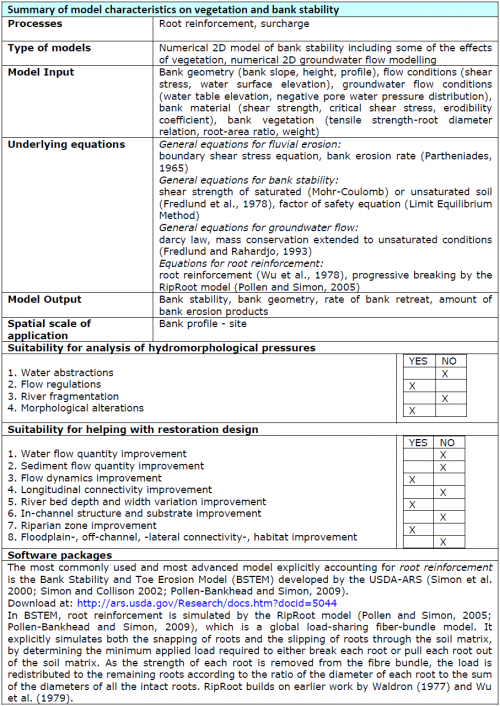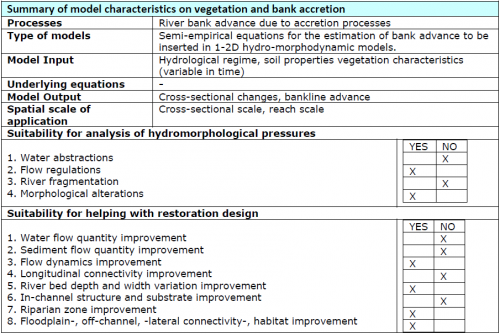Effect of vegetation on hydromorphodynamics
Vegetation can influence river hydrodynamics by changing the turbulent flow field and the averaged velocity profiles in comparison with those that can be commonly found in
non-vegetated flows. In this way, vegetation potentially has a relevant effect on flow resistance, sediment transport and bank dynamics (see Table 1).
Vegetation and flow resistance
Tables 2 summarises the suitability of models with flow resistance for the analysis of hydromorphological pressures or the design of restoration measures.
Future research is needed on the following topics:
- Effect of different types and growth stages of vegetation (rigid or flexible) and different vegetation densities on flow turbulence structure and secondary currents of a stream;
- Effect of plant reconfiguration with increasing flow velocity on drag;
- Effect of the spatial distribution of vegetation at a reach scale on flow resistance;
- Uprooting, breakage of plants during high-flow conditions may give rise to significant changes in flow resistance between the rising and falling limbs of the hydrograph;
- Develop suitable parameterization to characterize different species.
Vegetation and bank dynamics
Tables 3 and 4 summarise the suitability of models with bank stability and accretion, respectively, for the analysis of hydromorphological pressures or the design of restoration measures.
Future research and modelling challenges:
- More work is needed to better understand the hydrological effects of riparian vegetation and to incorporate them into models of bank erosion and failures.
- Another area of knowledge gaps concerns modelling interactions of the various erosion processes and mass failures, and the relative role of vegetation on near-bank hydrodynamic flow conditions, erodibility parameters, and shear strength. In order to extend results from a bank profile to a reach and account for variability of hydrodynamic, geotechnical, and vegetational conditions, vegetation should be included into 3-D morphodynamic models.
- Concerning bank accretion modelling is still in its infancy. Recommendations relate to three main aspects: the inclusion of vegetation dynamics, the influence of the high variability of flows, and the up-scaling of the effects acting at different scales.



